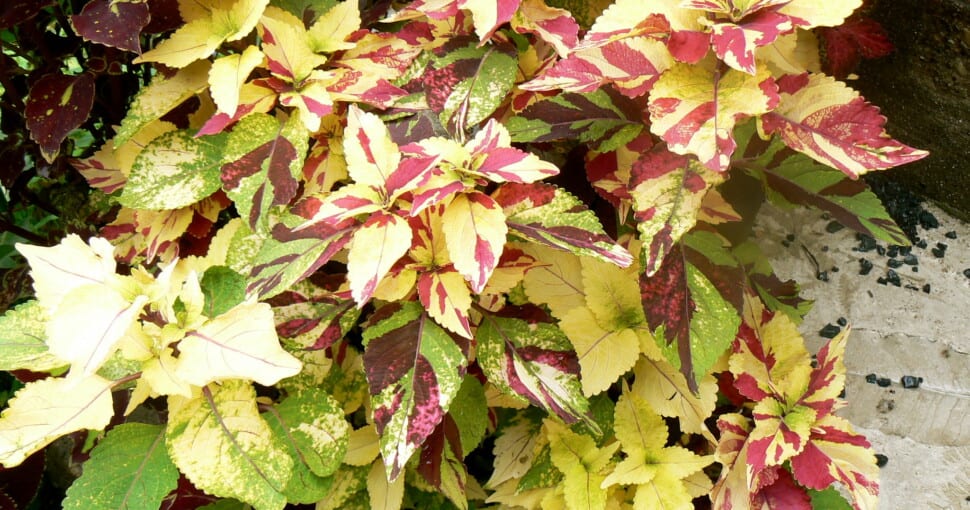Coleus plants are bright and colorful! Regardless of the variety you have in your garden, coleus always adds a splash of color to its surroundings. When the season’s flowers have disappeared, the rich colors of coleus leaves remain to cheer up your garden. The options are vast, with more than three-hundred listed coleus species and more than one thousand five hundred varieties.
Contents
Coleus is a member of the Lamiaceae, or flowering mint plant family. Coleus was native to tropical and subtropical regions, as it is a cold-sensitive plant. In warm regions, coleus plants are perennial. In the more temperate area, coleus will die back in winter. You could keep cuttings and grow more plants for the new season indoors over winter.
Coleus grows happily as indoor plants with different varieties needing various lighting levels. There are varieties that love the direct sun, some for dappled light, and shade-loving varieties. With such a wide variety, there is a significant variation in plant size, leaf size, shape, and color. As it is a member of the mint plant family, the stems of all coleus varieties are square.
Most coleus leaf edges are toothed or scalloped to some degree. The coleus leaves show strong vein patterning, and often the veins are part of the color contrast of the leaves. Research the variety of coleus you want to grow to ensure the right size plant for your needs. Coleus plant size can range from mature plants no bigger than six inches tall to plants that reach more than three feet in height.
Coleus plants may have a solid bright color, like the campfire variety with bright red leaves, or may have leaves with a combination of red, brown, green, cream, purple and yellow. Coleus plants may all look different and beautifully colored, but they are not the only plants with brightly colored foliage. Here are a few more plants that look like coleus.
1. Red Majestic Hazelnut
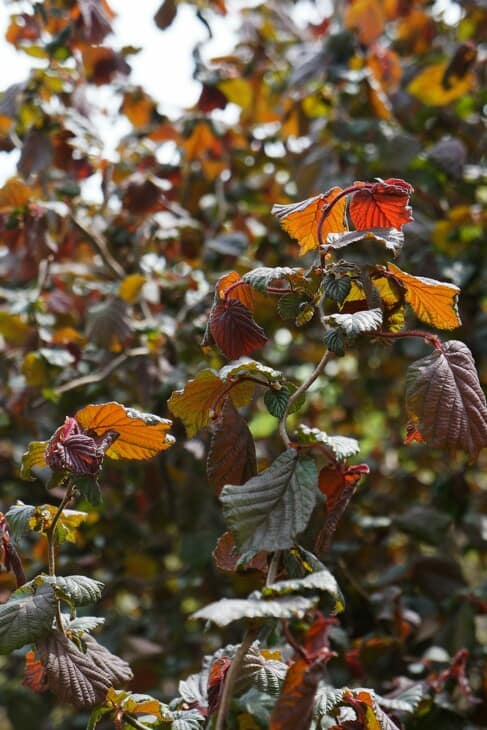
Hazelnuts (Corylus avellana ‘Red Majestic’) are also called filberts or cobnuts. Hazelnuts are deciduous members of the Betulaceae plant family, meaning they lose their leaves in winter. Some varieties of hazelnut trees can grow to twenty feet tall. The Red Majestic hazelnut is a slow-growing shrub and will take about twenty years to reach sixteen feet in height.
Red majestic hazelnut shrubs or small trees have heart-shaped leaves with a toothed edge and a rough texture. The leaves are wine red, and though the shade of color changes throughout the year, the rich red color remains. Leaves of the Red Majestic hazelnut are similar to the Big Red Judy coleus variety. Like coleus plants, Red Majestic hazelnuts make very attractive and colorful additions to any garden.
When the Red Majestic hazelnut loses its leaves in winter, these small trees or shrubs are adorned with purple-reddish male flowers. The male flowers are long cylindrical flower clusters called catkins that look like tinsel draped from the bare stems. Branches of the Red Majestic shrubs are twisted and tend to droop slightly.
2. Candle Plant
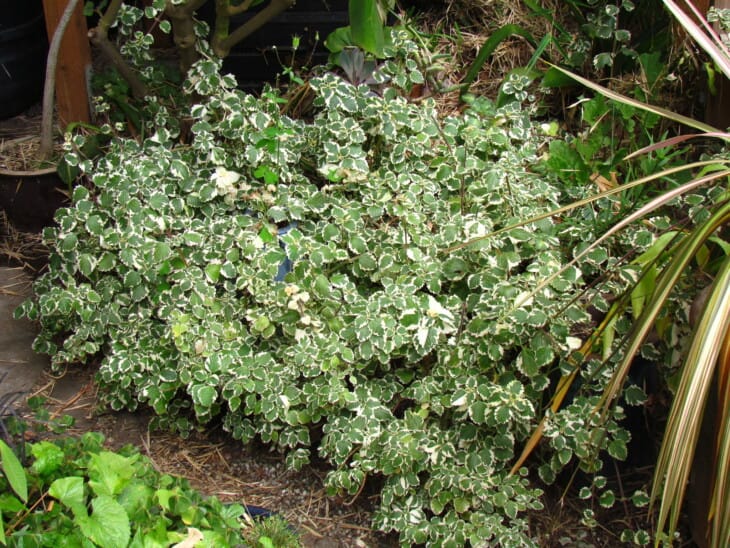
The candle plant (Plectranthus madagascariensis ‘Variegatus’) belongs to the Lamiaceae family. Plectranthus plants are so similar to coleus that they were considered the same genus until a few years ago. The candle plant is also called the variegated mint leaf plant, thicket coleus, or Madagascar coleus.
The candle plant has similar coloration to the wizard jade coleus plant, with bright cream and green leaves and scalloped edges. The candle plant has white or light purple flowers that extend above the foliage on long flower stems. The flowers are tubular with an upper and a lower part, similar in shape to coleus flowers. Candle plant flowers attract butterflies and beneficial pollinators to the garden.
Candle plants can be grown from cuttings. If cuttings are planted early in spring, the candle plant grows fast enough to flower by fall. Candle plants grow roughly twenty-three inches tall and do not require much pruning. They grow best in semi-shade, and while they enjoy regular watering, they are hardy and can go into a semi-dormant state to survive periods of drought.
3. Painted-Leaf Begonias
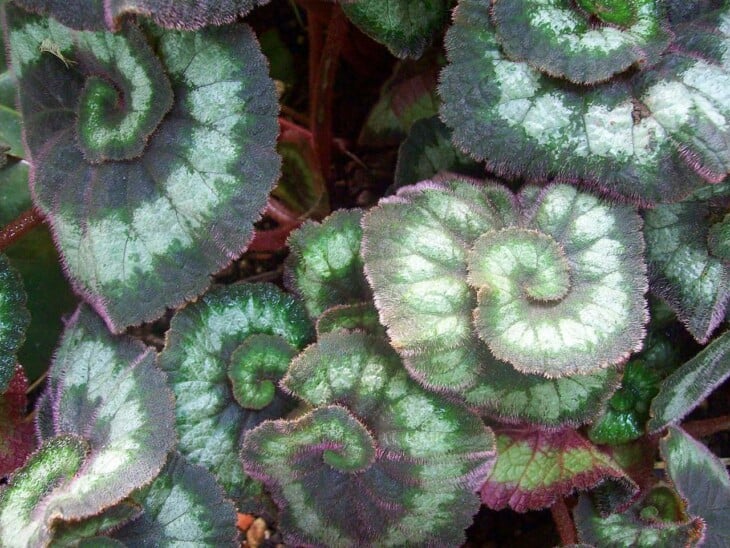
Painted-leaf begonias (Begonia rex-cultorum) are also called king begonias, beefsteak geraniums, or fancy-leaf begonias. Begonias belong to the Begoniaceae plant family, and they are perennial in tropical areas but are grown as annuals in temperate areas. Painted-leaf begonias can be grown indoors as perennials, even in colder regions.
Like with coleus, the foliage is the star attraction of the painted-leaf begonia. These begonias only grow between twelve and twenty-four inches high but make a big impact. Painted leaf begonia’s coloration includes green, silver, red, and purple combinations.
Painted-leaf begonias require a humid growing environment akin to their native environment, including Bangladesh, southeast China, Cuba, and the Caribbean. The painted-leaf begonia will only show off its incredibly showy leaves when the growing conditions are correct.
Related: 8 Plants That Look Like Begonias
4. Persian Shield
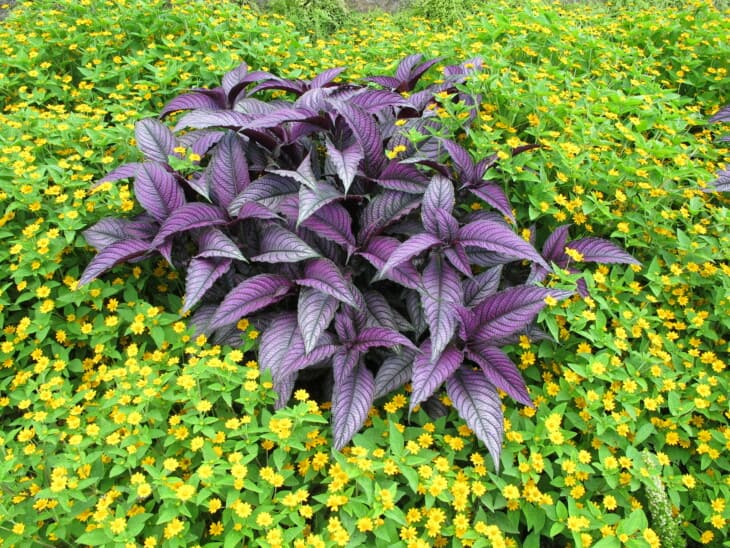
Persian shield (Strobilanthes dyeriana) is also called the royal purple plant and belongs to the Acanthaceae family. While its leaves resemble Persian shields, these plants are native to Myanmar, not the Middle East, and enjoy a more tropical environment. The Persian shield has eye-catching purple and green foliage with a slight iridescent gloss. The colors are similar to the coleus dark ruffles variety.
Persian shield plants grow three to five feet tall in tropical and subtropical regions but seem to stay slightly smaller when grown indoors. The beautiful lance-shaped leaves range between three and seven inches long and almost three inches wide.
Persian shield plants grow well from cuttings, so there is no reason to keep this beautiful plant all to yourself. The plant colors may also fade as the plant ages, so it is best to propagate new plants each season. To prevent the plant from becoming leggy, nip the flowers off. If the flowers are removed, your Persian shield should stay lush and produce more foliage.
5. Caladium Bicolor
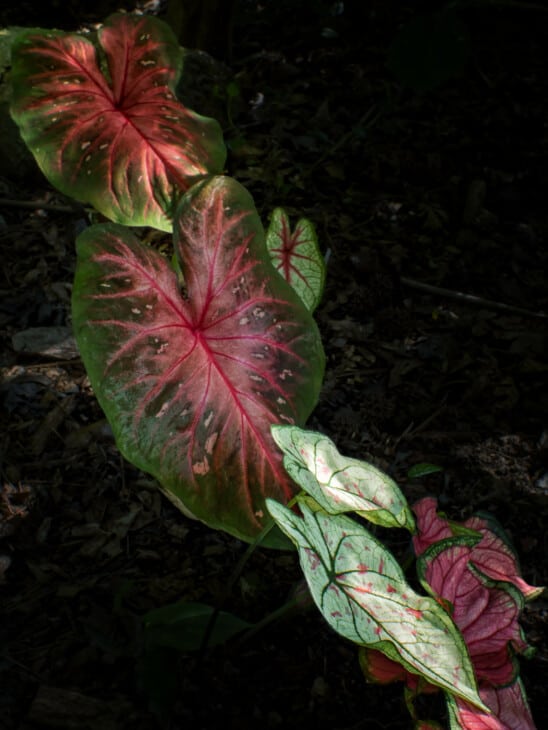
Caladium bicolor has many names, including the heart of Jesus, angel wings, and elephant ears. Caladiums belong to the Araceae plant family and are native to tropical areas of South and Central America, Parts of Africa, and India. Caladiums enjoy moist tropical environments and grow well along rivers and streams.
There are various caladium bicolor cultivars, but they all have heart-shaped leaves with striking multi-colored leaves. Like with coleus varieties, caladium bicolor leaves come in many combinations of colors, including red, pink, white, and green. In non-tropical climates, caladiums are grown as annual plants if planted outdoors but thrive indoors as perennial plants.
While caladium bicolor forms flowers resembling a calla lily, it is not the plant’s main attraction. As with coleus plants, leaves make a much brighter display when it comes to caladium bicolor. Calcium oxalate in caladiums can cause gastric distress in humans and pets if ingested.
6. Amaranthus Tricolor
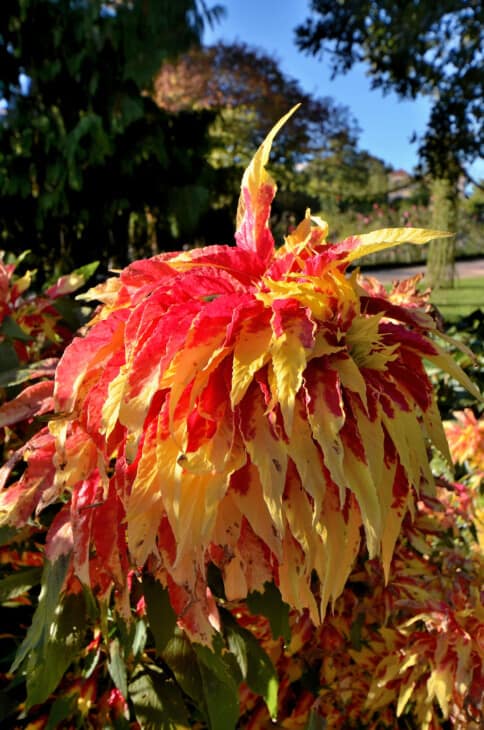
Amaranthus tricolor belongs to the Amaranthaceae plant family and may also be known as Joseph’s coat fountain plant, Chinese spinach, and summer poinsettia. Amaranthus tricolor is not only a beautiful plant but is also edible. While Amaranthus tricolor is native to Asia, it is grown as an edible crop in warm areas across the globe.
Amaranthus tricolor has long, lance-shaped leaves. Like coleus varieties like Le freak and flame thrower, the tricolor leaves have vivid red, green, and yellow colors. Amaranthus tricolor plants grow three feet tall in a year, and if it is planted for food, the leaves can be harvested throughout the year. Young leaves are ideal for including in salads, but older leaves are better cooked, like spinach.
You may not intend to grow Amaranthus tricolor for the flowers, but allowing the plant to flower and go to seed will ensure plenty of seeds for next year. This is an annual plant well worth having in your garden.

